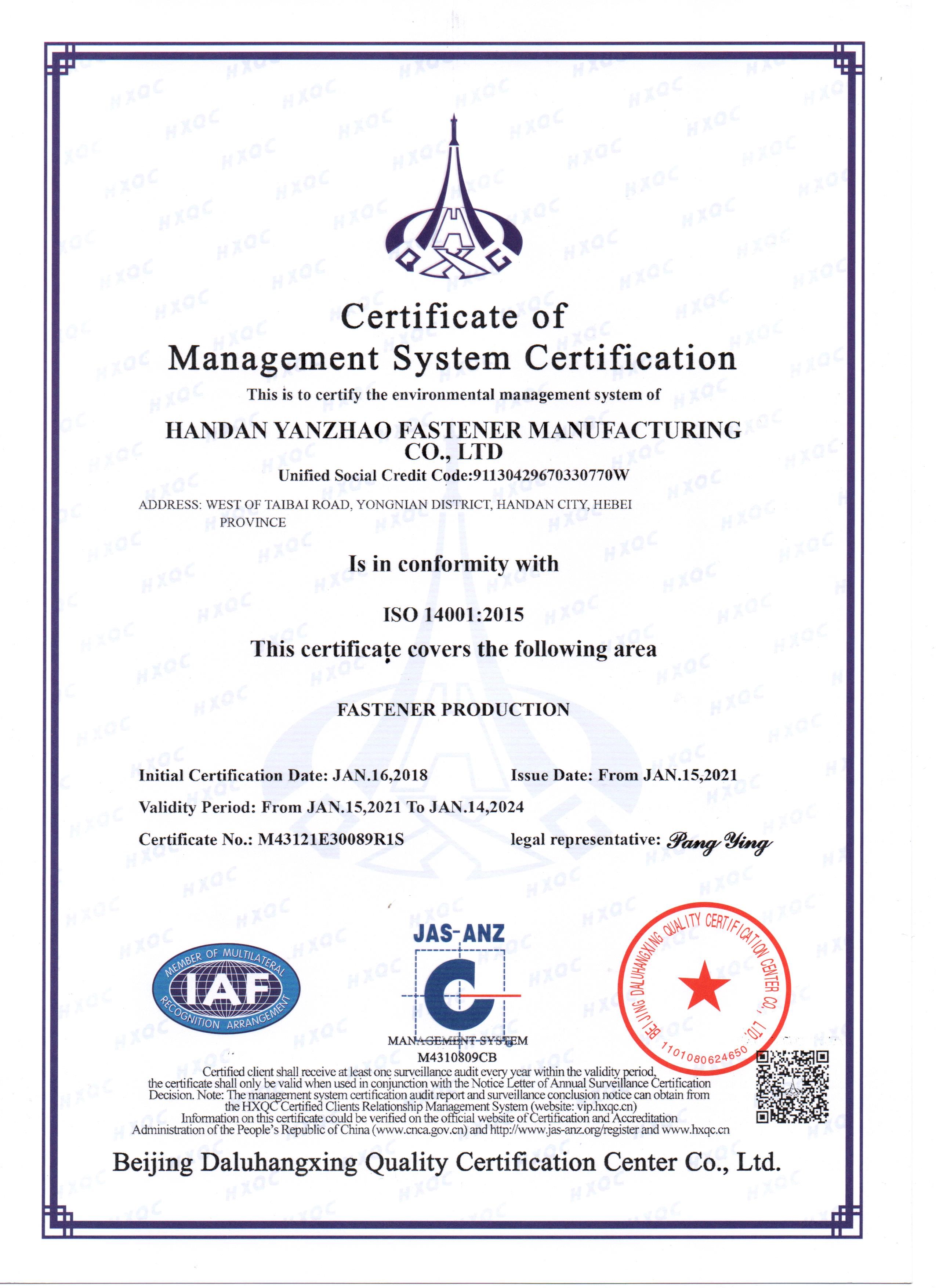rear axle u bolts
Nov . 16, 2024 17:55 Back to list
rear axle u bolts
Understanding Rear Axle U-Bolts Essential Components of Vehicle Suspension
When it comes to vehicle suspension systems, the rear axle plays a crucial role in maintaining stability, comfort, and overall vehicle handling. One of the key components that support the rear axle system is the U-bolt. These specialized fasteners are essential for securing the axle to the leaf springs, and understanding their design, function, and maintenance is critical for any vehicle owner or automotive enthusiast.
What are Rear Axle U-Bolts?
U-bolts are shaped like the letter “U” and are used primarily to anchor components securely. In the context of rear axles, U-bolts are designed to clamp the axle housing to the leaf springs, providing a solid connection that helps absorb shocks and distribute the weight of the vehicle evenly. Typically made from high-strength steel, these bolts are often coated with anti-corrosive materials to withstand harsh environmental conditions.
The main purpose of U-bolts is to create a reliable connection that allows for flex and movement of the suspension without compromising strength. They come in different sizes and lengths, depending on the design and specifications of the vehicle. For example, heavy-duty trucks or vehicles designed for towing often require larger and stronger U-bolts to handle increased loads.
Importance of U-Bolts in Vehicle Dynamics
The U-bolt's role in suspension systems cannot be overstated. When driving over bumps or uneven terrain, the suspension system must handle significant forces. U-bolts help keep the axle aligned with the spring, preventing lateral movement that could lead to instability. A properly functioning U-bolt system contributes to better ride quality, improved handling, and enhanced safety.
Moreover, U-bolts allow for straightforward adjustments, enabling mechanics to change the ride height of a vehicle. By adding or removing leaf springs or adjusting the U-bolt tension, one can effectively alter the vehicle’s suspension characteristics, which is particularly beneficial for performance-oriented modifications.
rear axle u bolts

Signs of U-Bolt Wear and Failure
Like any mechanical component, U-bolts can wear out over time due to stress, corrosion, and fatigue. Regular inspections are vital to ensure that they remain in good condition. There are several signs of U-bolt wear or failure to look out for
1. Looseness If the U-bolts feel loose or if you notice a change in the vehicle’s ride height, this may indicate issues that need addressing. 2. Corrosion Rust and corrosion can weaken the U-bolt. If you spot any signs, it’s best to replace them as soon as possible. 3. Cracking or Bending Any visible deformation or cracking in the U-bolt should prompt immediate inspection and replacement. 4. Unusual Noises Clunking or creaking sounds when driving can indicate that the U-bolts are loose or that there’s excessive wear in the suspension system.
Maintenance and Replacement
To ensure the longevity of U-bolts, routine maintenance is essential. It is advisable to check torque settings periodically, especially after altering the suspension configuration or following significant usage, such as heavy towing. This helps maintain the U-bolt’s clamping force and overall integrity of the suspension system.
Replacing U-bolts should be done with care, always following manufacturer specifications regarding size, grade, and torque settings. When replacing U-bolts, it’s also a good practice to inspect related components, such as leaf springs and shock absorbers, to ensure overall system health.
Conclusion
In summary, rear axle U-bolts are indispensable components of vehicle suspension systems, providing strength and stability. Understanding their significance, recognizing the signs of wear, and ensuring proper maintenance will not only extend the life of these essential parts but also enhance the safety and performance of your vehicle. Whether you’re a casual driver or a dedicated automotive enthusiast, keeping an eye on your U-bolts is a small yet crucial part of vehicle care.
Latest news
-
High-Quality Panel Stud Bolt Reliable Panel Stud Bolt Factory & Suppliers
NewsJul.08,2025
-
High-Precision Fine Thread Locknuts Manufacturer & Supplier Custom Solutions
NewsJul.08,2025
-
PH Imperial Stud Bolt – High Strength Fasteners from Leading Supplier & Factory
NewsJul.07,2025
-
High-Quality Allen Wrench Bolts Leading Factory, Company & Suppliers
NewsJul.07,2025
-
Wholesale Ball Stud Bolt - High Quality Supplier & Factory Price Reliable Wholesale Ball Stud Bolt Company
NewsJul.06,2025
-
High-Strength Alloy Bolts Manufacturer & Supplier Quality Alloy Fasteners Factory
NewsJul.06,2025
